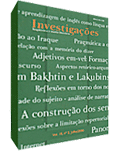IDEOLOGIA E REPRESENTAÇÃO DE ATORES SOCIAIS: A INVASÃO AO IRAQUE
Abstract
Este artigo, baseado nos pressupostos teórico-metodológicos da Análise de Discurso Crítica (Chouliaraki & Fairclough, 1999; Fairclough, 2003), procura investigar o discurso da mídia impressa brasileira sobre a invasão anglo-saxônica ao Iraque no ano de 2003. A análise lingüística centrou-se na investigação das maneiras de representar as pessoas envolvidas na invasão, por meio da análise da representação de atores sociais. A análise sócio-discursiva realizada permite depreender que, em grande parte, os sentidos veiculados pela grande mídia têm caráter ideológico.References
ALDÉ, A. Enquadramentos do Iraque. Disponível em: http://www.unb.br/fac/comunicacaoepolitica/alessandra2004.pdf>. Acesso em 15 nov. 2004.
BHASKAR, R. 1989. The possibility of Naturalism: a philosophical critique of the contemporary Human Sciences. Hemel Hempstead: Harvester Wheatsheaf. Bush já está em guerra. Veja, São Paulo, ed. 1788, ano 36, n. 5, 5 fev. 2002, p. 62-5.
CHOULIARAKI, L. & FAIRCLOUGH, N. 1999. Discourse in late modernity:
Rethinking Critical Discourse Analysis. Edinbourg: Edinbourg University Press.
FAIRCLOUGH, N. 2003. Analysing discourse: textual analysis for social
research. London: Routledge.
HALLIDAY, M. A. K. 1985. Introduction to Functional Grammar. London:
Edward Arnold.
HARVEY, D. 1996. Justice, nature and the geography of a diference. London: Blackwell.
RAMALHO, V. C. V. S. 2005. O discurso da imprensa brasileira sobre a invasão anglo-saxônica ao Iraque. Dissertação. Departamento de Lingüística, Línguas Clássicas e Vernácula. Universidade de Brasília.
THOMPSON, J. B. 2002. Ideologia e cultura moderna: teoria social crítica na era dos meios de comunicação de massa. Petrópolis: Vozes.
van LEEUWEN, T. 1997. A representação dos atores sociais. In: PEDRO, E. R. (org.) Análise Crítica do Discurso: uma perspectiva sociopolítica e funcional. Lisboa: Caminho, p.169-222
Downloads
Published
How to Cite
Issue
Section
License
Copyright (c) 2005 Viviane C. Vieira Sebba Ramalho

This work is licensed under a Creative Commons Attribution 4.0 International License.
Authors who publish with Revista Investigações agree to the following terms:
Authors retain copyright and grant the journal right of first publication with the work simultaneously licensed under the Creative Commons Attribution 4.0 International (CC BY 4.0) license that allows others to share the work with an acknowledgement of the work's authorship and initial publication in this journal.
Authors are able to enter into separate, additional contractual arrangements for the non-exclusive distribution of the journal's published version of the work (e.g., post it to an institutional repository or publish it in a book), with an acknowledgement of its initial publication in this journal.
You are free to:
Share — copy and redistribute the material in any medium or format for any purpose, even commercially.
Adapt — remix, transform, and build upon the material for any purpose, even commercially.
The licensor cannot revoke these freedoms as long as you follow the license terms.
Under the following terms:
Attribution — You must give appropriate credit , provide a link to the license, and indicate if changes were made . You may do so in any reasonable manner, but not in any way that suggests the licensor endorses you or your use.
No additional restrictions — You may not apply legal terms or technological measures that legally restrict others from doing anything the license permits.

